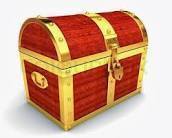Swaziland

Certainly! Here is the complete financial history report of Eswatini, translated into International English as requested:
Comprehensive Financial History Report of Eswatini
Basic Information about Eswatini
-
Official country name: Eswatini (since 2018)
-
Most widely used official language: siSwati (ISO 639-1 code: ss)
-
Second official language: English
-
Country ISO code: SZ
-
Current official currency: Lilangeni (plural: Emalangeni)
-
Currency ISO code: SZL
Monetary History of Eswatini
Current Currency: Lilangeni (plural: Emalangeni)
-
ISO Code: SZL
-
Symbol: L (singular) / E (plural)
-
Subdivision: 1 Lilangeni = 100 cents
-
Date of introduction: 6 February 1974
-
Circulation period: From 1974 to present (active)
-
Mint: Produced by international mints (no national mint)
-
Issuing bank: Central Bank of Eswatini
-
Coin denominations: 1, 2, 5, 10, 20, and 50 cents; 1, 2, and 5 emalangeni
-
Banknote denominations: 10, 20, 50, 100, and 200 emalangeni
-
Designs and symbols: Coins and banknotes feature cultural symbols, historical figures, and national landscapes. Current banknotes depict King Mswati III, the reigning monarch, alongside elements of Eswatini’s culture and nature.
-
Status: Official and actively circulating currency, used alongside the South African Rand within the Common Monetary Area
-
Monetary legislation: Regulated by the Central Bank of Eswatini, maintaining a fixed 1:1 exchange rate with the South African Rand.
-
Interesting fact: In 2018, a commemorative 100 emalangeni banknote was issued to mark the 50th anniversary of Eswatini’s independence.
Previous Currency: Swazi Pound
-
Circulation period: Until 1974, before the introduction of the Lilangeni
-
Context: Replaced by the Lilangeni when Eswatini adopted its own national currency, moving away from exclusive use of the South African Rand.
-
Status: No longer in circulation; now a collector’s item.
Parallel Currency: South African Rand (ZAR)
-
Legally circulates in Eswatini alongside the Lilangeni since 1974 due to membership in the Common Monetary Area.
-
Maintains parity at 1:1 with the Lilangeni.
-
Accepted as legal tender throughout the country.
Economic and Monetary Context
-
The Lilangeni was introduced to replace the South African Rand while maintaining parity to facilitate regional trade.
-
Eswatini has a small, open economy closely linked to South Africa.
-
Key sectors include agriculture, mining, manufacturing, and forestry.
-
Economic challenges include a high unemployment rate (approximately 35% in 2023) and social inequality.
-
Inflation was around 4.9% in 2010.
-
The Central Bank of Eswatini is responsible for currency issuance and exchange rate stability.
-
Fiscal deficit is approximately 2% of GDP, with public debt at 41% of GDP in 2024/25.
Summary of Eswatini’s Currencies
| Currency | ISO Code | Symbol | Subdivision | Circulation Period | Issuing Bank | Main Denominations (coins/banknotes) | Current Status |
|---|---|---|---|---|---|---|---|
| Lilangeni | SZL | L / E | 1 Lilangeni = 100 cents | Since 1974 to present | Central Bank of Eswatini | Coins: 1, 2, 5, 10, 20, 50 cents; 1, 2, 5 Lilangeni Banknotes: 10, 20, 50, 100, 200 |
Active and official |
| Swazi Pound | - | - | - | Until 1974 | - | - | Out of circulation |
| South African Rand | ZAR | R | 1 Rand = 100 cents | Circulates alongside since 1974 | South African Reserve Bank | Various South African coins and banknotes | Parallel circulation |
Additional Information
-
Current banknotes bear signatures of the Central Bank Governor and the Finance Minister, which vary by issue.
-
Coins and banknotes often honor King Mswati III and Swazi cultural elements such as emblematic animals and traditional architecture.
-
Membership in the Common Monetary Area ensures exchange rate stability and facilitates regional trade but limits Eswatini’s monetary policy autonomy.
-
The country’s official name change to Eswatini in 2018 is reflected in the latest currency issues.
This report provides a detailed overview of Eswatini’s financial and monetary history, highlighting the Lilangeni as the current official currency, its relationship with the South African Rand, and the country’s economic context.
 Nilton Romani
Nilton Romani
